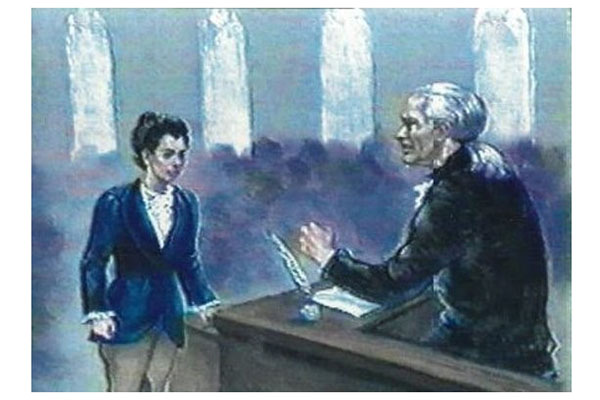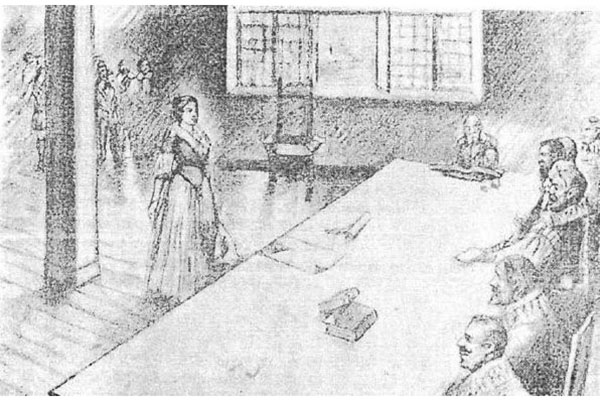- Apply
- Visit
- Request Info
- Give
Eastern history professor presents on legendary Virginia witch
Written by Noel Teter
Published on November 07, 2022
For centuries, stories have been told around Halloween in the Virginia Beach area about the mysterious and mischievous Grace Sherwood, the “Witch of Pungo.” Eastern Connecticut State University History Professor Scott Moore recently held a lecture on Sherwood’s legend at Lynnhaven House in his native Virginia Beach.

Moore is writing a book on the legend titled "The Witch of Pungo: Grace Sherwood in Virginia History and Legend." Stories he heard as a child in Virginia Beach largely inspired his interest in Sherwood’s life. “I heard stories about her as a kid, learned about her trial in school, and she's a very important part of the city's culture and folklore,” Moore recalled. With his book, Moore hopes to illustrate Sherwood’s life and trial for witchcraft as well as her cultural impact on his hometown.
For the record, Sherwood had already built a bad reputation before being tried for witchcraft, having been in court several times. Moore is often frustrated by a gap in storytelling about Sherwood, as “the records don't tell us about who she was as a person.” In other words, Sherwood’s story has been passed on without her perspective. “We only know when she was in court and a handful of the accusations about her,” said Moore. “It's obvious, however, that she was not popular in her community and that many people thought she was a witch.”
To Moore, the public’s perspective on Sherwood during her life highlighted the larger issue of the injustice that was done to accused witches. “If we contextualize her case by looking at similar ones in New England and Europe, the women targeted with witchcraft accusations were almost always outsiders described as argumentative or combative,” he explained. Given that only one couple formally accused Sherwood of witchcraft, Moore sees clear evidence that judges may not have believed the accusation but “definitely considered Sherwood to be a troublemaker.” This reputation, Moore believes, may have taken away Sherwood’s credibility.
Rumors about Sherwood had been circulating for years. Cotton crops had been withering, which was widelybelieved to be a result of witchcraft. One couple alleged that Sherwood had killed their cotton and pigs by bewitching them, while another woman claimed that Sherwood came to her at night and rode her like a horse before turning into a cat and escaping through a keyhole.
“It was widely believed that witches could not only kill crops, animals, and people,” Moore said, “but that they also had the power to bewitch people at night and ride them to the point of exhaustion and almost death.” Sherwood’s unpopular status in Virginia Beach made her an easy target for such accusations.
Sherwood’s trial for witchcraft as ordered by a judge was brutal. On July 10, 1706, she was tied up and ducked in the Lynnhaven River. She floated and survived, which indicated to some that she was a witch. She served a brief jail sentence, and in 1740, she died at her farm in Pungo. Moore called attention to gaps in the historical records surrounding Sherwood’s trial. “For example, the trial records don't include questions that were asked or how they were answered,” he said.
While frustrating when trying to compile records, the gaps in historical knowledge about Sherwood illustrate a major point of Moore’s story. “I'm hoping that the book will help people see how witchcraft belief in Virginia connected to the broader beliefs in North America and Europe,” he said. “I'm also hoping it will be an interesting example of how strange or unusual events can have a legacy that shapes a region's sense of self.”





